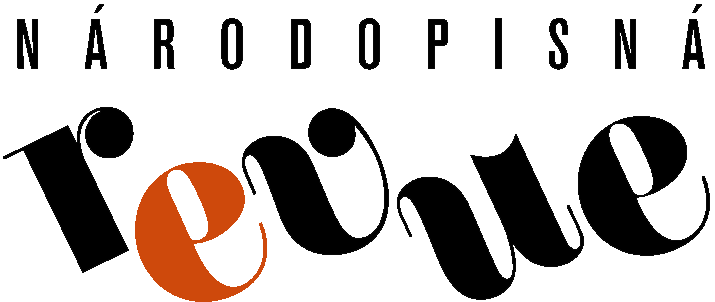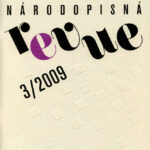Journal of Ethnology 3/2009 is aimed at food-related issues. Elizabeth Fendl and Jana Nosková dealt with the description of Czech cuisine within the German environment (“Bohemian cuisine is used in the Czech Lands again”. Pictures of Czech cuisine in German-written cookery books and tourism materials after 1989), Rastislava Stoličná pointed out the diet of minorities in Slovakia (Traditional culinary culture of ethnic minorities in Slovakia), Ivan Hlavatý paid attention to the Greeks in the Czech environment (Cuisine and food of the Greek minority in the Czech Republic as a factor of ethnic identity) while Marta Toncrová paid her attention to the Ukrainian minority (Remarks on eating habits of the Ukrainians living in the Czech Republic - on an example of Brno and its surroundings). Anna Drożdż investigated the food of the population in the Vistula delta at the Eastern-Pomeranian coast in Poland (Changes in eating habits in the territory of Greater Żuławy in the 20th century).
Transferring Tradition column publishes the article Recipes Liebigs Fleischextrakt (Magdalena Rychlíková) on a collection of promotional recipes from the years 1890-1904 from the collections of the Náprstek Museum in Prague, the contribution What one used to eat in the village of Velehrad or Folk food one hundred years ago (Petr Horehleď) and the essay Josef Maceček, a woodcarver making birds in the Beskydy Mountains - the self-fulfilment of an amateur author (Václav Michalička). Section Review remembers the unreached 75th birthday of ethnologist Václav Frolec (1934-1992). Social Chronicle remembers the anniversaries of ethnologists Eva Urbachová (born 1924) and Lenka Nováková (born 1949) and it includes the obituary notes of musicians Vladimír Meloun (1926-2009) and Jaromír Bažant (1926-2009). Other regular columns publish the reports from conferences, exhibitions, festivals and concerts as well as reviews of new books and reports from the branch.
“Bohemian cuisine is Used in the czech Lands Again” Pictures of czech cuisine in German-written cookery Books and Tourism Materials after 1989
The essay describes the picture of Czech national cuisine and its features, namely based on an analysis of forewords in cookery books, guidebooks and websites, which document how the picture of Czech cuisine has been formed mainly after 1989. The picture of Czech cuisine has been analyzed solely in German-written materials, i.e. there has been analyzed the way of creating this picture abroad and for foreign audience. The essay shows how the picture of Czech cuisine has been created by emphasizing the influence of countryside, climate and tradition, originality and anchoring in the kitchens of lower and middle classes and negative affect of socialistic era. It partially deals with the choice of national specialities and the reports on eating habits of the Czechs, which complete the picture of Czech cuisine. The analysis of creating the picture of Czech cuisine is also more extensively involved into the issues of utilizing this picture in tourism, as well as into the discussions on globalizations and regionalism. The Czech example is compared with the examples from the German speaking regions. The structure of Czech national cuisine is discussed also in relation to identity creating – in connection with the thesis that the pictures mediated by mass media can become a source of identity creating. They can serve as identity mediators. The matter of the essay is not to observe the processes of identity creating at the readers, users of aforementioned sources.
Traditional culinary culture of Ethnic Minorities in Slovakia
Food and ways of eating belong to the most significant identification codes of human communities. The culinary culture ranks among the structures of the so-called long durance and the eating models belong to the most stabile values of human communities. They are an integral part of the cultural equipment of every person; in their rudimentary form, they survive for long time and often under changed conditions. The ethnological researches substantiate the population of different ethnic minorities in Slovakia was able to safeguard their cultural identity until today. In addition to the main ethnic features, such as language and ethnic awareness, their traditional culture is one of the most distinctive identification symbols. This relates also to the range of traditional eating habits by which they demonstrate their distinctiveness and dissimilarity to the Slovak majority and other ethnic groups. The contribution presents the traditional culinary culture of three ethnic minorities living in Slovakia: the Hungarians, Romani and Ruthenians – Ukrainians who belong to the largest minorities and who show distinctive ethno-identification symbols in their traditional culinary culture even today.
Cuisine and Food of the Greek Minority in the czech Republic as a Factor of Ethnic Identity
The essay deals with fifty years of the Greek minority presence in the Czech Republic from the point of view of food and its generation changes as a factor of ethnic identity. The author describes the Greek cuisine historically, from the arrival of the Greek community until now, and its representation and changes in family cuisine and annual and family ceremonies. He also follows the role and importance of Greek gastronomy as an element of living traditions and ethnic self-reflexion. As to the ethnic identification, the essay offers an overview of Greek everyday and festive menus. It records the difficulties that the Greek community had in the past when looking for some victuals and that resulted in animal husbandry and vegetable growing. With the aforementioned factors, the author tries to demonstrate the rate of Greek culinary representation in the cuisine of this minority and the Greek food as a factor of identification and expression of the ethnic affiliation within the tangible culture.
Remarks on Eating Habits of the Ukrainians Living in the czech Republic (on an Example of Brno and its Surroundings)
The research probe was done at the Ukrainians living in Brno and its surroundings during the last two decades, observing their way of eating. The traditional Ukrainian dishes are prepared on workdays and on holidays. Paska, pastry consecrated in the church along with other foods, is connected with Easter. All those asked still, maintain this ceremony, the choice of foods for the above purpose is, however, quite free today. At Christmas, the tradition of seven, nine or twelve fast courses survives in a different extent. There is made e.g. kutja (a dish made of grain cereals, honey and poppy) and in addition to this, some families eat fried carp with potato salad. The Ukrainians do not refuse Czech dishes fully, their menu, however, consists mainly of Ukrainian dishes, such as bortsch, turnovers made of noodle dough, stuffed cabbage, different salads, fish and meat shashlicks. Some raw materials are still imported from Ukraine, e.g. salo (slabs of raw salt-cured lard), buckwheat, rock salt, caviar, honey, vodka, sauerkraut, chocolate or even bread. The youngest generation uses the offer of catering facilities and fast foods.
Changes in eating habits in the territory of Greater żuławy in the 20th century
The essay deals with the issues of a battle against hunger, especially against the fear of starvation, as well as with the fact how the people learned to live in a foreign territory, which role the food played during adaptation to the new life situations and how the eating habits determined the regional identity. The field research was done in the region of Greater Żuławy (Poland) based on a questionnaire devoted to the issues concerning culinary traditions and habits linked to food and dining. The received material showed the importance of food in the course of settling into the foreign surroundings, distinguishing two stages: 1. the importance of food at the not-standard time, i.e. in the first years after the arrival at the new place; 2. the importance of food at the standard time, i.e. in the years of stabilization (approximately since the 1950s until 2008). It has been proven that the culinary traditions and eating habits cannot by analyzed separately, out of the unit (thus out of the other items of the culture). The changes in social structure, or the confrontation with new behaviour models and with other traditions are reflected in eating standards. They become mostly evident as a change and a decline. These processes are particularly obvious when confronting different cultures and in extraordinary situations – e.g. in war.



